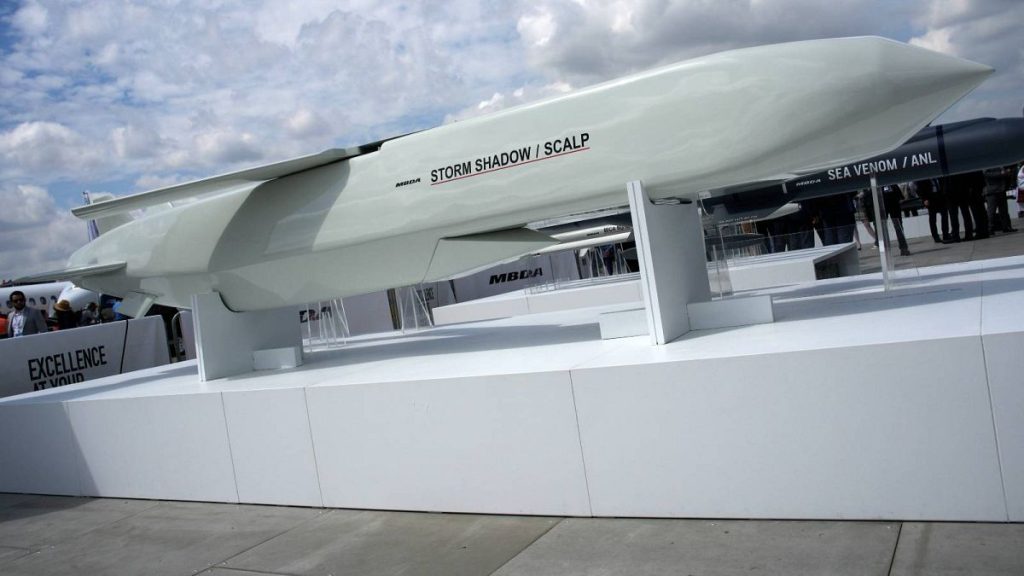Ukraine has taken a significant step in its ongoing conflict with Russia by firing foreign-made missiles directly into Russian territory for the first time. The missiles in question include the UK-made Storm Shadow cruise missiles and the US-made Army Tactical Missile Systems (ATACMS), which were launched from High Mobility Artillery Rocket Systems (HIMARS). Reports indicate that Ukraine targeted military facilities within Russia, such as a site in Bryansk, located 379 km from Moscow. Prior to this tactical shift, these weapons had been used predominantly for precision strikes within Russian-occupied territories, marking a notable escalation in Ukraine’s military strategy. This decision coincided with the 1,000-day mark of the war and followed a reported approval from US President Joe Biden for Ukraine to utilize these long-range missiles on Russian soil.
The Storm Shadow cruise missile, developed collaboratively by the UK and France, possesses a remarkable range of 250 km and features advanced guidance systems that enhance its precision strikes. Weighing in at 1,300 kg, the missile executes a terrain-following flight path, making it particularly difficult to detect prior to impact. It utilizes GPS, onboard guidance, and infrared technology to ensure high accuracy against its targets. Storm Shadow missiles have a warhead design that allows for effective penetration of fortified structures, demonstrating their capability in tactical warfare. Moreover, ATACMS missiles, which are about 4 metres long, also exhibit significant technological advancements, including GPS guidance and a notable ability to release hundreds of bomblets upon deployment, making them formidable in terms of area saturation against enemy forces.
Ukrainian President Volodymyr Zelenskyy has long advocated for the use of advanced weaponry against Russian military assets, seeking to diminish Russia’s operational capabilities prior to frontline engagements. The UK has been receptive to this strategy, while also outlining a calibrated response to Russia’s military escalation, thereby allowing Ukraine to utilize Storm Shadow missiles earlier this year. French President Emmanuel Macron has similarly expressed a willingness to support Ukraine with long-range missile capabilities. However, the Biden administration initially hesitated, considering the potential for direct conflict escalation between the US and NATO with Russia should these weapons be employed.
Experts have indicated that while Ukraine’s ability to target deep within Russian territory could theoretically disrupt Russian operations, significant obstacles remain. A defense analyst noted that for significant impact, Ukraine would require a vast inventory of ATACMS, which it currently does not possess. Operational readiness, trained personnel, and overall military logistics present formidable challenges that cannot easily be resolved solely through the provision of more advanced weaponry from Western allies. The effectiveness of these strikes in altering the dynamics of the war remains uncertain, as Ukraine also grapples with sustaining its military forces amid ongoing pressure from Russian offensives.
The decision to shift tactics and use these long-range missiles directly on Russian territory also raises strategic questions about the potential repercussions of escalation. While Ukraine aims to impose higher costs on Russian military assets, the risk is that such actions could provoke a stronger military response from Russia and draw Western nations deeper into the conflict. The Biden administration’s cautious approach reflects an ongoing effort to balance support for Ukraine against the imperative of avoiding a broader war involving NATO and Russia directly.
Ultimately, Ukraine’s use of foreign-made missiles introduces a new chapter in its military efforts against Russian aggression. As the conflict continues, the implications of this strategic shift will likely resonate across the international stage, influencing both the battlefield dynamics and the geopolitical landscape. As Ukraine navigates these treacherous waters, the outcome will hinge on not only the effectiveness of its new armament capabilities but also the capacity to secure additional military support and manage the delicate balance of international relations amidst heightened tensions.














